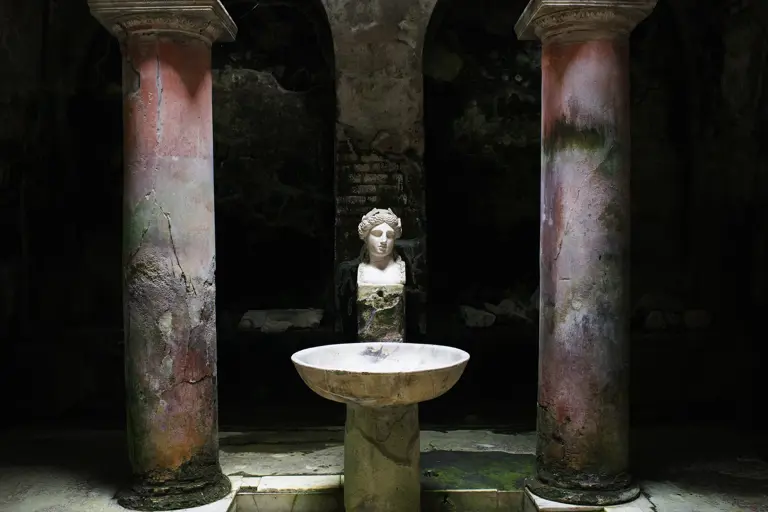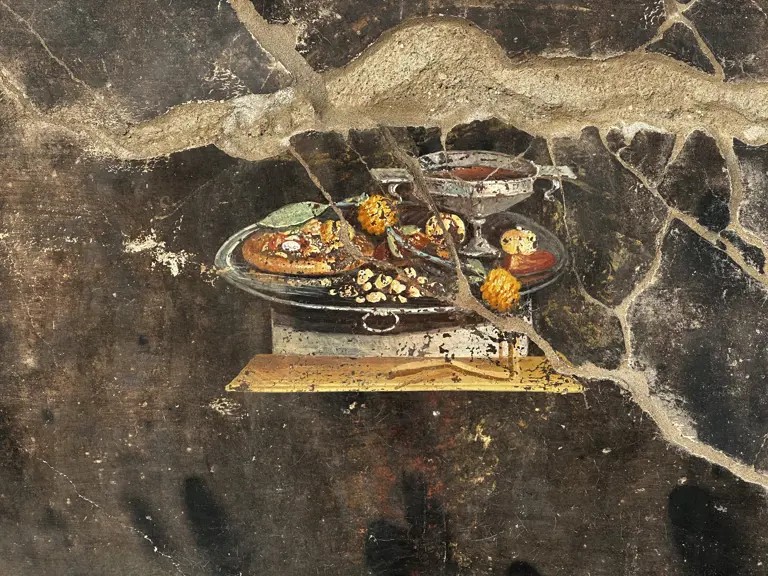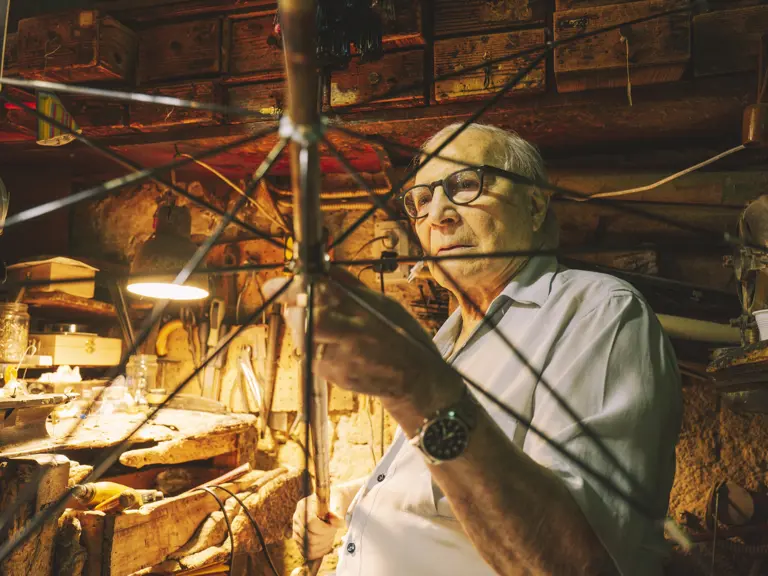BEYOND POMPEII: FOUR UNMISSABLE ANCIENT SITES
25.09.2024 NAPLES & AROUND
Herculaneum
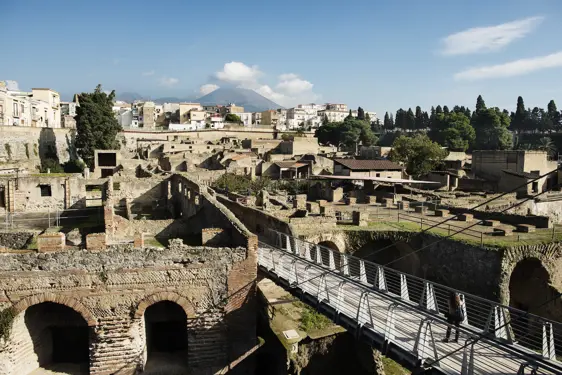
View
Why go?
Just 30 minutes from central Naples, Herculaneum may have been smaller than Pompeii, but it had more of a luxury cachet than its neighbour to the south. It was a seaside retreat for the Roman elite, many of whose statues, artefacts and other possessions were preserved here under a dense protective layer of tufa following the AD 79 eruption of Vesuvius. Only a quarter of the known extent of the ancient settlement has been excavated – including one of the most luxurious villas of the ancient world, the Villa of the Papyri, which may have belonged to Julius Caesar’s father-in-law. The remarkable collection of bronze statuary discovered here now fills a succession of rooms in Naples’ Archaeological Museum., which also conserves around 1,800 carbonised papyrus scrolls from the villa’s library that have only recently begun to be deciphered thanks to advances in X-ray tomography. The Herculaneum visitor experience has improved immeasurably in recent years thanks to investment from the site’s main external funding partner, the Packard Humanities Institute.
Don’t miss: The House of the Telephus Relief, one of the site’s largest private residences. In 2023, its delightful pomegranate garden was turned into a relaxation area for visitors, complete with deckchairs and a booksharing library.
Ipogeo dei Cristallini
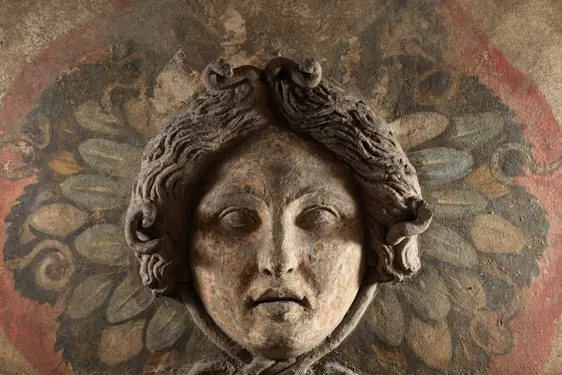
View
Why go?
In 1889 a Neapolitan baron who lived in the La Sanità district had a shaft dug down from the cellar of his townhouse, hoping to find water for a well. Instead, his workers suddenly found themselves in an underground chamber. They had unwittingly stumbled onto a country road of ancient Neapolis, the Greek city whose ground level lies far below the modern town. As was common in classical times, tombs of the city’s wealthier families lined the main roads leading out of the city. Four were discovered down here, excavated in the soft tufa rock by the side of the road, alongside urns and other funerary items. All of the tombs in the Ipogeo dei Cristallini are evocative, but one, known as ‘Tomb C’, stands out from the rest for the vivid hues of its painted decorations and the extraordinary Medusa head bas-relief that dominates the back wall.
Don’t miss: The touching detail of the sculpted pillows lining the wall of Tomb C, where the deceased could rest their heads for their final sleep.
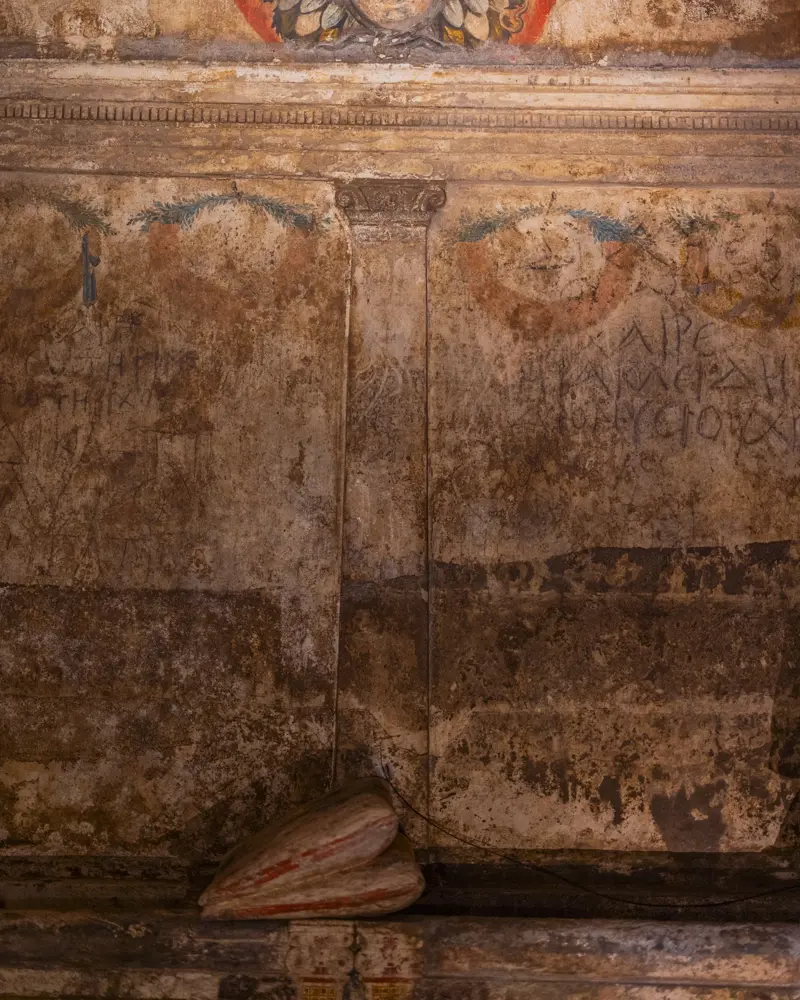
Baiae
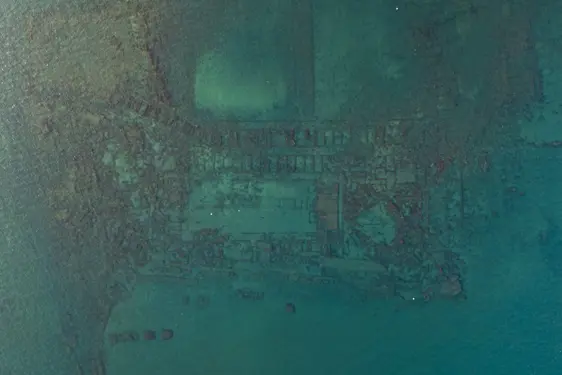
View
Why go?
Because of the sheer fascination of an ancient site that is half on land, half underwater. From the first century AD onwards, Baiae, on the coast west of Naples, became the Miami Beach of Ancient Rome, a place where the late imperial ruling class went to relax in their huge villas, indulge in sensuous or cultural pleasures, and party the night away. Among the emperors who sought relief from the cares of state here were Caligula, Nero, Hadrian and Septimus Severus. Today’s archaeological park includes the remains of the huge Temple of Venus baths complex, with its richly decorated mosaic floors. But what makes Baiae really special is the Parco Archeologico Sommerso or Submerged Archaeological Park, where visitors can dive to parts of the ancient town that sank below sea level over the years due to the volcanic phenomenon known as bradyseism. For those without diving experience, snorkeling expeditions are also available.
Don’t miss: If you don’t fancy getting wet, you can still get a feel for some of the archaeological treasure that lie beneath the sea here by taking a tour on a glass-bottomed boat.
Positano Roman Villa
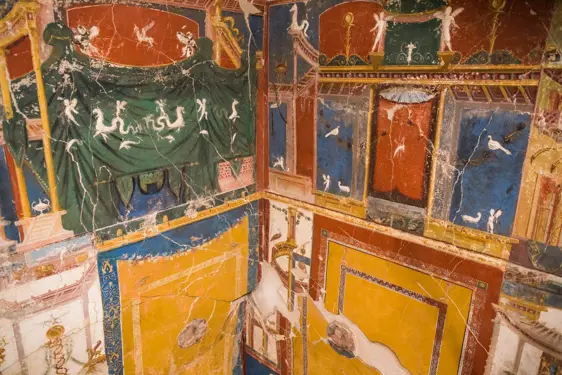
View
Why go?
Because it is such a thrill to discover one of Italy’s ‘newest’ archaeological wonders hiding in plain sight beneath the lanes of a renowned Amalfi Coast resort. That’s new in terms of when it opened to the public – in the summer of 2018. Inside, steps lead down underneath Santa Maria Assunta, Positano’s mother church, to what is left of the interior of a Roman villa. Remote and difficult to reach in the classical era, this rocky coast was a destination for those in search of romantic solitude. We may never know who the owner of this sumptuous residence was, but his or her taste and status shine forth from the vivid murals, their colours seemingly as fresh as when they were painted. The villa was buried during the AD 79 eruption of Vesuvius, not only by ash and pumice but by a mudslide set off by the torrential rains that followed in the wake of the volcanic apocalypse.
Don’t miss: Check out the fissure that runs along the length of the east wall. The violence of the mudslide literally shunted the top half of the room almost a foot away from its base, so that the mural decoration on either side of the crack no longer line up.
Photos © Roberto Salomone
Le Sirenuse Newsletter
Stay up to date
Sign up to our newsletter for regular updates on Amalfi Coast stories, events, recipes and glorious sunsets
